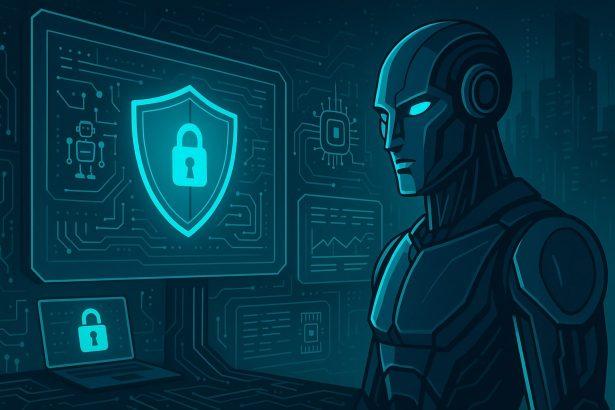As cyber threats grow more sophisticated in 2025, a new class of artificial intelligence—agentic AI—is emerging as both a powerful ally and a potential risk in the cybersecurity landscape. Unlike traditional automation or generative AI, agentic AI systems operate autonomously, making decisions, adapting strategies, and executing tasks with minimal human oversight. This transformative capability is redefining how organizations detect, respond to, and even anticipate cyber threats.
What Is Agentic AI?
Agentic AI refers to autonomous, goal-directed systems capable of perceiving their environment, reasoning through complex tasks, and taking actions to achieve specific objectives. These AI agents can dynamically orchestrate tools and sub-agents, manage long-term goals, and make context-sensitive decisions using persistent memory and real-time data. In cybersecurity, this means moving beyond reactive systems to proactive defense mechanisms capable of mitigating threats before they escalate.
Transforming Cybersecurity Operations
Agentic AI is revolutionizing security operations centers (SOCs) by automating and enhancing several critical functions:
- Autonomous Threat Detection and Response: These systems can monitor network traffic, analyze user behavior, and detect anomalies indicative of malicious activity. Upon identifying a threat, agentic AI can initiate automated responses, such as isolating compromised endpoints or blocking malicious IP addresses, thereby reducing response times and limiting potential damage.
- Managing Alert Fatigue: Security teams often face overwhelming volumes of alerts, many of which are false positives. Agentic AI can investigate, summarize, and prioritize alerts, ensuring analysts focus only on critical issues, thus reducing burnout and improving efficiency. (dropzone.ai)
- Adaptive Threat Hunting: By continuously learning from new data, agentic AI can proactively hunt for threats within an organization’s systems, identifying hidden patterns and indicators of compromise that traditional methods might miss. (Exabeam)
Real-World Applications and Industry Adoption
Leading cybersecurity firms are integrating agentic AI into their platforms to enhance threat detection and response capabilities:
- Microsoft and CrowdStrike: Both companies have incorporated agentic AI into their security solutions, enabling features such as automatic triage of notifications and autonomous incident response, helping organizations manage the growing number of threats and workload they face. Axios
- Palo Alto Networks: The company announced its acquisition of the AI startup Protect AI, aiming to bolster its AI capabilities to secure AI applications effectively. Additionally, Palo Alto unveiled its Prisma “AIRS” security platform, incorporating AI agent technologies to enhance cybersecurity measures. Investor’s Business Daily
Emerging Risks and Challenges
While agentic AI offers significant advantages, it also introduces new risks and challenges:
- Autonomous Decision-Making Risks: The autonomy of agentic AI systems can lead to unintended consequences if not properly governed. For instance, AI agents might take actions that, while logically sound, conflict with organizational policies or ethical standards.
- Security Vulnerabilities: Agentic AI systems can be susceptible to novel attack vectors, such as prompt injections that manipulate agent behavior, or exploitation of system vulnerabilities due to the AI’s access to sensitive data and systems.
- Privacy Concerns: The deployment of agentic AI raises significant privacy issues, especially when these systems have access to personal or sensitive data. Ensuring that AI agents operate within strict privacy guidelines is crucial to prevent unauthorized data access or breaches.
The Road Ahead
As organizations continue to adopt agentic AI, it’s imperative to balance innovation with caution. Implementing robust AI governance frameworks, conducting thorough risk assessments, and ensuring transparency in AI decision-making processes are essential steps to harness the benefits of agentic AI while mitigating its risks.
In the evolving cybersecurity landscape, agentic AI stands as a double-edged sword—offering unprecedented capabilities to defend against threats, yet demanding vigilant oversight to prevent potential missteps. The future of cybersecurity will depend on our ability to navigate this complex terrain, leveraging agentic AI’s strengths while safeguarding against its inherent risks.




